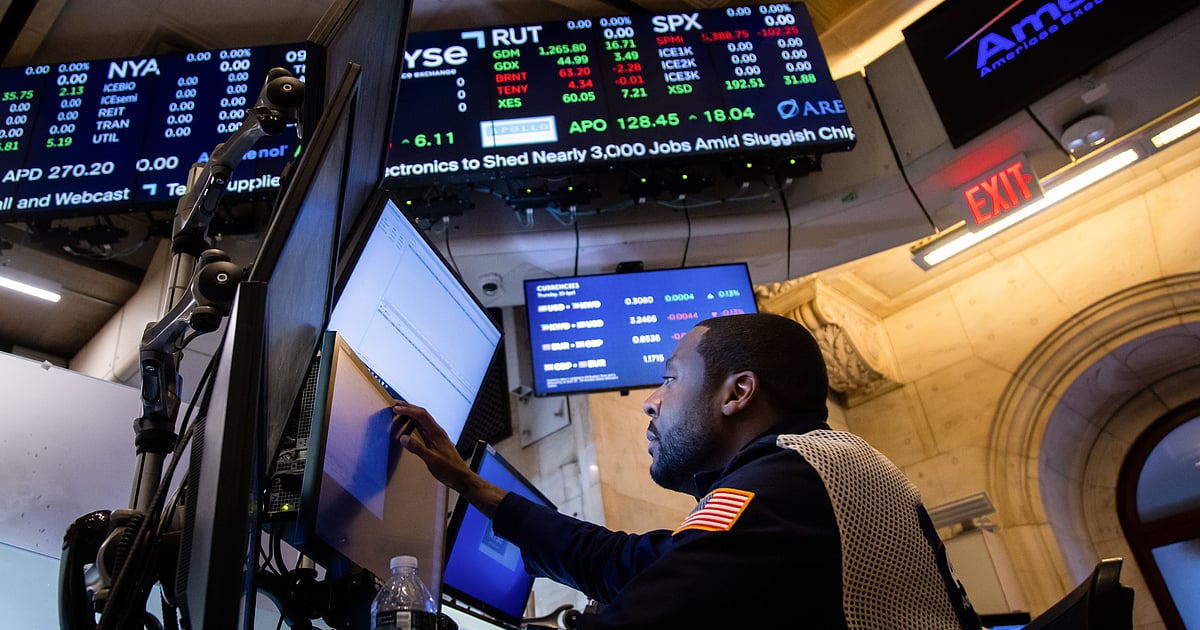On Wednesday, gold reached unprecedented heights, solidifying its status as a safe-haven asset amidst rising global tensions. As Asian stocks dipped and U.S. equity futures faltered, the ongoing trade disputes showed no signs of resolution, particularly after Nvidia Corp. disclosed that the U.S. government imposed new restrictions on certain chip exports to China. This development triggered a notable decline in the tech sector, with Nasdaq 100 contracts dropping over 1.3% and S&P 500 futures declining by 0.8%.
The Surge in Gold Demand
Gold’s recent price surge reflects heightened demand for safe-haven investments. As geopolitical uncertainties loom, investors are flocking to gold, which has historically provided stability during tumultuous times. The Swiss franc and euro also gained ground against many currencies, further indicating a shift in market confidence. Meanwhile, U.S. Treasuries saw a second consecutive day of gains after discussions about potential rule changes that could reduce trading costs for banks.
- Key Highlights:
- Gold prices soared to record levels.
- U.S. Treasuries experienced a rise, reflecting market shifts.
- The Swiss franc and euro gained traction against other currencies.
Market Reactions to Trade Tensions
In China and Hong Kong, stock markets remained in the red after positive economic growth figures. Despite an unexpected acceleration in the Chinese economy during the first quarter of 2025, challenges persist, largely attributed to tariffs imposed by former President Donald Trump. The uncertainty around tariff policies has left investors hesitant, causing significant fluctuations in global markets.
Vishnu Varathan, the head of economics and strategy at Mizuho Bank in Singapore, expressed concerns about the unpredictability of U.S. tariffs. He noted that the latest restrictions on Nvidia signal a troubling trend in U.S.-China relations, despite a seemingly calm exterior.
Nvidia’s Challenges and Market Implications
In after-hours trading, Nvidia’s shares plummeted further, losing over 6% after the announcement that a license will be required for exporting its H20 chips to China. This escalation in restrictions comes as the company anticipates substantial charges, estimated at $5.5 billion, related to inventory and purchase commitments associated with the H20 line. The ripple effect was felt across the semiconductor supply chain, affecting Nvidia’s suppliers in Asia.
- Expert Insight:
- Tomo Kinoshita, a global market strategist at Invesco, commented that these restrictions stem from fears surrounding China’s growing electronics industry, suggesting they may become a lasting aspect of U.S. policy.
Ongoing Trade Negotiations
Efforts to resolve trade differences between the European Union and the United States have encountered hurdles, with officials indicating that most tariffs on EU goods will remain in place. Meanwhile, Japan’s chief negotiator is set to visit Washington from April 16-18 to initiate formal discussions aimed at easing trade tensions.
In a related context, the Trump administration has signaled a willingness to leverage tariff negotiations to pressure global partners into limiting their economic engagements with China. The ongoing situation has raised questions about future U.S.-China negotiations, especially after China halted further deliveries of Boeing aircraft.
Economic Indicators and Investor Sentiment
In Japan, 30-year bonds rallied as market volatility subsided in U.S. Treasuries, following comments from Bank of Japan Governor Kazuo Ueda about potential policy responses to rising U.S. tariffs. Economic indicators show a positive trend, with retail sales jumping 5.9% in March compared to the previous year, marking the fastest growth since December 2023.
Investors are anticipating insights from Federal Reserve Chair Jerome Powell regarding the economy, which may further influence market dynamics.
Summary of Market Movements
-
Stock Market Updates:
- S&P 500 futures fell by 0.8%.
- Japan’s Topix decreased by 0.3%.
- Australia’s S&P/ASX 200 gained 0.3%.
- Hong Kong’s Hang Seng dropped by 1.5%.
- Shanghai Composite fell by 0.5%.
-
Currency Shifts:
- The euro rose to $1.1324.
- The Japanese yen strengthened to 142.79 per dollar.
- Commodity Trends:
- West Texas Intermediate crude remained stable.
- Spot gold increased by 1.3% to $3,271.67 per ounce.
As markets navigate through this complex landscape, the interplay between trade policies, economic indicators, and investor sentiment will continue to shape financial outcomes globally.











